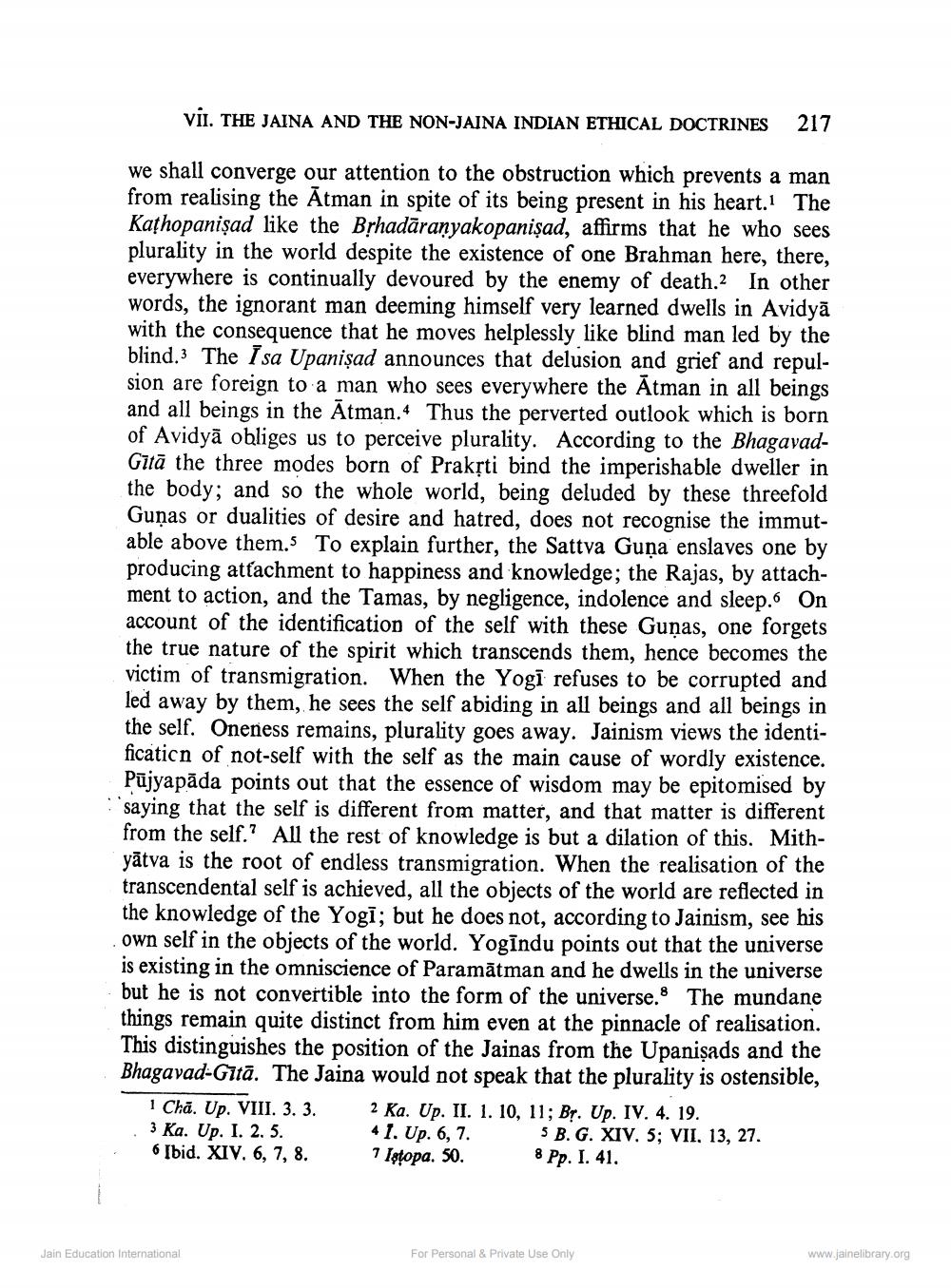________________
VII. THE JAINA AND THE NON-JAINA INDIAN ETHICAL DOCTRINES
217
we shall converge our attention to the obstruction which prevents a man from realising the Atman in spite of its being present in his heart.1 The Kathopanişad like the Brhadāranyakopanişad, affirms that he who sees plurality in the world despite the existence of one Brahman here, there, everywhere is continually devoured by the enemy of death.2 In other words, the ignorant man deeming himself very learned dwells in Avidyā with the consequence that he moves helplessly like blind man led by the blind.3 The I sa Upanişad announces that delusion and grief and repulsion are foreign to a man who sees everywhere the Atman in all beings and all beings in the Atman.4 Thus the perverted outlook which is born of Avidyā obliges us to perceive plurality. According to the BhagavadGitā the three modes born of Prakrti bind the imperishable dweller in the body; and so the whole world, being deluded by these threefold Guņas or dualities of desire and hatred, does not recognise the immutable above them. To explain further, the Sattva Guņa enslaves one by producing attachment to happiness and knowledge; the Rajas, by attach
nt to action, and the Tamas, by negligence, indolence and sleep. On account of the identification of the self with these Guņas, one forgets the true nature of the spirit which transcends them, hence becomes the victim of transmigration. When the Yogi refuses to be corrupted and led away by them, he sees the self abiding in all beings and all beings in the self. Oneness remains, plurality goes away. Jainism views the identificaticn of not-self with the self as the main cause of wordly existence. Pūjyapāda points out that the essence of wisdom may be epitomised by 'saying that the self is different from matter, and that matter is different from the self.? All the rest of knowledge is but a dilation of this. Mithyātva is the root of endless transmigration. When the realisation of the transcendental self is achieved, all the objects of the world are reflected in the knowledge of the Yogi; but he does not, according to Jainism, see his own self in the objects of the world. Yogindu points out that the universe is existing in the omniscience of Paramātman and he dwells in the universe but he is not convertible into the form of the universe. The mundane things remain quite distinct from him even at the pinnacle of realisation. This distinguishes the position of the Jainas from the Upanisads and the Bhagavad-Gītā. The Jaina would not speak that the plurality is ostensible,
1 Chā. Up. VIII. 3. 3. 2 Ka. Up. II. 1. 10, 11; Br. Up. IV. 4. 19. . 3 Ka. Up. I. 2. 5.
41. Up. 6, 7. 5B.G. XIV. 5; VII. 13, 27. Ibid. XIV. 6, 7, 8. 7 latopa. 50. 8 Pp. I. 41.
Jain Education International
For Personal & Private Use Only
www.jainelibrary.org




